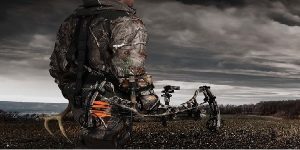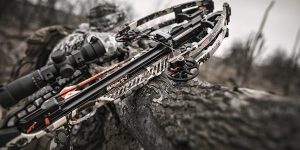Parts of a Crossbow – 25 Vital Crossbow Parts You Should Know About
Crossbow has become a must-have gadget due to its adorable features and appliances.
In the beginning, it was a well-known weapon of the medieval age. But over time, hundreds of latest modifications have been developed in this model and now there are many crossbow parts that were not available in ancient times.
This is a reason that most of the people use the crossbow applications for getting deep penetration as well as accurate shots of bolts during hunting the deer and other animals.
Every season, its manufacturers bring out a lot of multiple features and engineering levels just according to the archer’s demands.
So, if you are newbies to the world of target shooting or have been away from archery for so many years, then it is very important to be familiar with each part of the crossbow.
It will surely help you to maintain the crossbow in a convenient way, for gaining the most reliable and optimal performance.
Now, without making a while, let me make the most perfect and honest guide for you.
Also Read: Where To Shoot A Turkey With A Bow
Basic Parts of Crossbow
Crossbow is categorized into two types named as; compound crossbow and recurve crossbow. Both are easily available in the market and almost are common in their characteristics depending on your personal preferences and experiences.
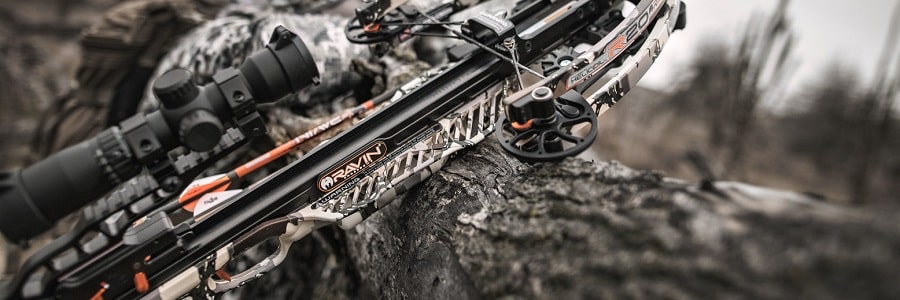
However, I have mentioned all the basics of crossbows parts by which you should be familiar but there are certain parts of crossbows that you must have. You will go through each part as well as their benefits and working behaviors, one by one.
1. STOCK
The base of the crossbow is nearly helpful for holding the crossbow in good manners. The trigger, barrel, and sight bridge are the few other parts that are attached together in different positions with it.

This part remains quite opposite to the shoulder of the hunter while shooting the target. It may be made by using different composite materials such as wood and plastic.
The prettiest feature is that it may interchange within the best one. Moreover, you are able to install some cocking devices in it. Easily accessible even by a normal hunter.
2. SCOPE
A scope is a useful tool from all of the crossbow accessories that magnifies the actual targets up to different ranges. In the market, there are two types of scope; multi-dot scope and red-dot scope, both have various magnificent powers.

You can magnify the target up to 40 yards by using the red-dot scope, while on the other hand multi-dot scope allows you up to 50+ yards. Both are equally good and easily affordable.
Also Read: Best Bow Cases of 2020 Reviews & Buyer’s Guide
3. STIRRUP
The Stirrup is an essential part of the crossbow which is normally made by using the sturdy layers of metal, connected to the stock tip. Generally, it is used during cocking the crossbow for preventing the bow from slipping aspects.
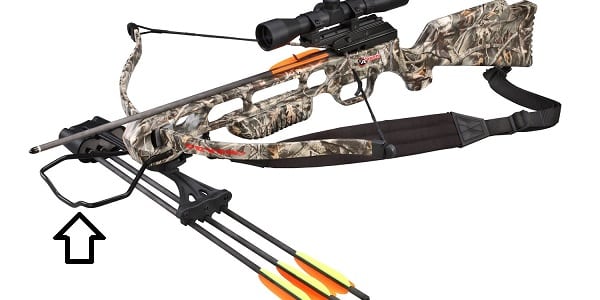
It is a ring-shaped metal piece that can also be attached to the top end of barrels for saving the bolts or arrows to get damage. It can be made by using the webbing or a piece of rope in the home. It is available in the market at affordable prices.
4. CABLE
Cable plays a very attractive pulley role in the crossbow equipment by providing the adjustable shooting powers. It is attached to the cams of the crossbow and helps us in fixing the shooting abilities just according to our needs during hunting the target.

5. BARREL
The barrel is a grooved track located on the top of the crossbow that keeps the bolt and string in the exact direction for examining the penetrated shots of bolts.

The manufacturers used either aluminum or carbon fibers for constructing the most efficient barrels such as strong and light-weighted barrels, in the market.
Mostly, their production has been done by using the different composite materials such as polymer and plastic in the few cheapest crossbows.
6. STRING
The string plays a very constructive role in crossbow, which is usually made by using natural fiber, polyester fiber, and synthetic fiber. It helps to load the crossbow up to our determining draw weight in practicing or for killing the targets.

All the crossbow performance greatly matters on the most durable string. Before going to hunt, there is a need to wax the string, well. When we draw the string back, both limbs transfer their whole energy to bolt, for a shot.
Also Read: How Much Draw Weight Do Bowhunters Need
7. SERVING
The serving mechanism is very simple and easy. Just wrap any kind of thread over the string. It will ensure the arrow is 100% safe from the retention spring. It is about 4 inches long and after making a quiet push on the trigger, rail becomes alert to fire the actual target.
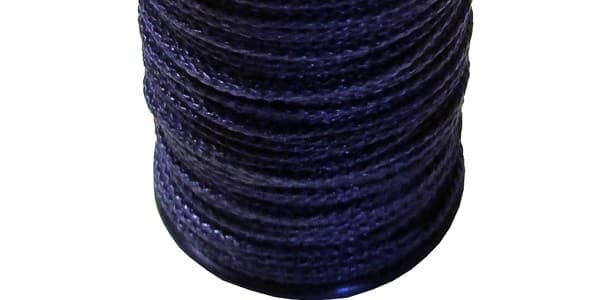
8. TRIGGER
As a crossbow resembles a rifle. Because the method to shoot the target is similar. While you are using the crossbow, just there is a need to press the trigger like the gun.

Now, the latch mechanism of the crossbow will be activated due to which the string will be released within a second, after the cocking of a crossbow. Furthermore, this is a very safe way to avoid so many accidental shots of the crossbows.
9. ARROW RETENTION
Arrow retention is a way to keep the bolt safe from the slipping aspects. During cocking the crossbow, a lot of changes occur to crash the bolt. So, here the grooved piece of metal protects the bolt till releasing the latch.

It is constructed by using the steel as well as plastic fibers. This is considered the most essential part of the crossbow because it ensures the flight of the bolt in the straight forward direction while aiming the target.
10. ARROW TRACK
The flight track or bolt channel is another name of the arrow track which is located on the top of the barrel between the bow and latch mechanism. Before loading the crossbow, a bolt is fixed in this track, and just after making a fire, it travels toward the target to shoot accurately.

Actually, this part guides the bolt in the right direction for gaining the most precise and accurate shots of bolts. Usually, this is made of hard metal and also interchangeable, within a while.
Also Read: Best Longbows Reviews & Buyer’s Guide
11. CAMS & PULLEYS
The crossbow works properly by using the limbs on each side of it which is used to store the kinetic energy in them just after pulling the string.

The energy transferring mechanism is very simple as when the hunter draws the string back, then wheels that are mounted with the limbs move and pull the cable.
This movement of wheels produces the energy in the limbs and after pressing the trigger bolt hits the target with fully firing power.
12. CROSSBOW LIMBS
Limbs are considered the basic source for generating the kinetic energy that is held in the horizontal position of a crossbow. There are also the wheels or pulleys within each limb that moves just after drawing the bow.
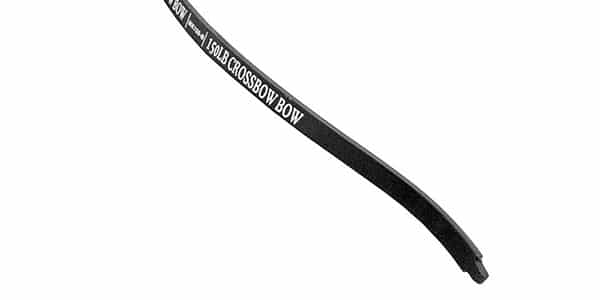
The position of cams has differed in both types of crossbows. In the compound crossbow, cams are located at each side of the limbs while in case of recurve crossbow, cams are adjusted within a curved limb.
13. LIMB POCKETS
The limb pockets remain the limbs attached to the crossbow. These pockets already have been adjusted by the manufacturers. The limbs are exclusively providing more fastened shots.
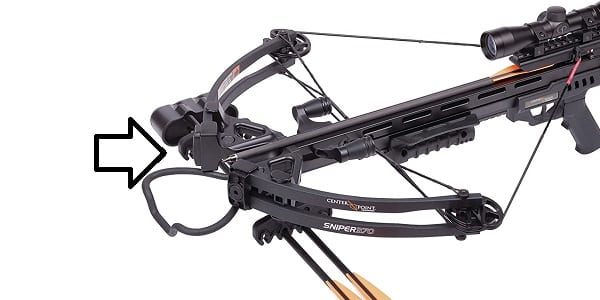
14. FOREGRIP
This is a handgrip that makes your hunting tour the most reliable and comfortable. It ensures you by giving full control over the shots as well as keeping your target lined up.
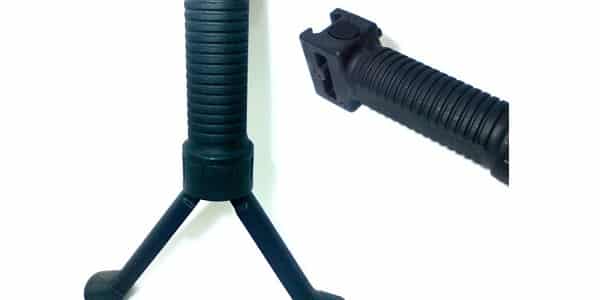
There are different sorts of crossbow grips, available in the market. Some crossbows require the collapsible foregrip while others may be in the need for removable grips.
15. RISER
The riser is the thick and non-bending middle part of the crossbow which exists near the limbs just perpendicular to the stock section. It is especially used for fixing the limbs at a certain angle just according to the guides of professional archers.

They are designed by using various materials such as magnesium fibers or aluminum fibers. In the most recent, they are also made by carbon fibers for keeping the weight minimum.
16. SIGHT
The site is considered the most important part of the crossbow to have. It is connected to the upper part of the stock that is used to improve the accuracy of the bolt as well as makes the perfect alignment according to our selected target to shoot.
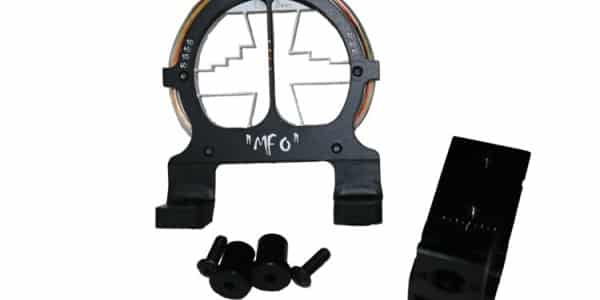
The sights come in the three different configurations such as sight, red-dot, pin, and peep sight. In these options, the scope will be the best because it gives the multiple features and functions also including the various magnificent powers.
The red-dot sight normally works on the battery and has more than 3- aiming points while the peep sight involves the adjustable pin for aiming points and has the metal peephole.
17. SIGHT BRIDGE
It is the base that is used to hold the sight to the upper part of the crossbow in the most efficient way. It generates a strong base for the sight that ensures the hunters for gaining the consistently accurate and precise shots in hunting.

The sights may be located at different locations of the crossbow such as near the trigger. Moreover, they are made of aluminum, the most lightweight material. They can be easily changed just after expiring the first one.
18. LATCH
The latch is a simple mechanism of holding the string while drawing or cocking the crossbow until it is released by pressing the trigger. In this sense, your crossbow string should be light and more durable for getting your demanding shots.
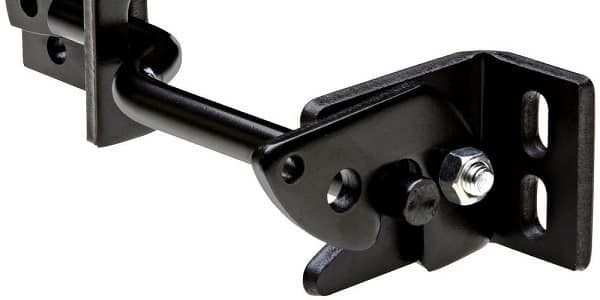
19. QUIVER
The quiver is the case or pocket for carrying the bolts during the whole hunting tour. It is centered on the upper side of the crossbow or either may be in the beneath it.

It gives the luxury to the hunters on their tour. Quivers are available in the market, within various designs, shapes, and configurations such as hip quivers. Usually, 3-4 bolts can be easily carried by it.
Moreover, there is a lid on it that covers the bolts and arrows from getting damaged.
Also Read: Best Compound Bow Quivers of 2020 Reviews & Buyer’s Guide
Parts of Crossbow Bolts
Crossbow bolts are the necessary part of the crossbows like the gun bullets. They are specially designed for the crossbow to hunt the target. As in the traditional bow, broadheads work, similarly, bolts play a very constructive role in the shooting practices.

The working mechanism of broadheads and bolts is the same. But they are shorter as compared to the arrowheads, and approximately 16 inches to 22 inches.
20. SHAFT
The cover of a bolt which is usually made of aluminum or carbon fibers. Aluminum and carbon fibers made the bolt lightweight, durable, and highly resistant to bending due to the storm.

21. SPINE
The spine is a basic term of a bolt that is directly meant for stiffness and highly resistant, to bending due to the hard impact of the weather.

22. GRAINS
It is another bolt term in archery hunting, that is used for determining the actual weight of the shaft of the bolt. Its value is calculated in the term of GPI (grain per inch).

You can easily generate the value of your bolt just multiplying the bolt length with the grains per inch. Moreover, bolt value can be converted into the grams by dividing it with 0.0648.
23. NOCK
The nock is the small component of the bolt which is made of aluminum and plastic, located onto the back section of the shaft. It is used to keep the bolt in a very comfortable place according to your target.
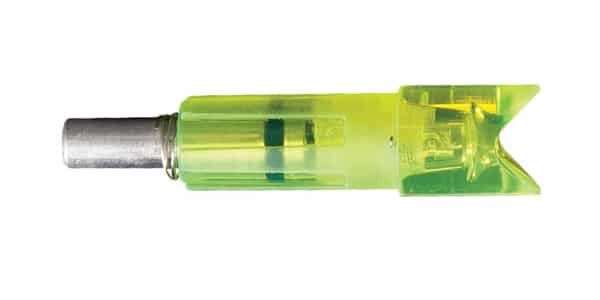
There are different types of nocks available in the market that vary in multiple shapes and sizes. Half-moon nock and flat nock are the two main categories. While the capture nock, multi-groove nock, and Omni nocks are the other options to have.
24. FLETCHING
Whether you are using the compound crossbow or a recurve crossbow, bolts will have the wings or vanes located near the nock for stabilizing the position of a bolt in the air.
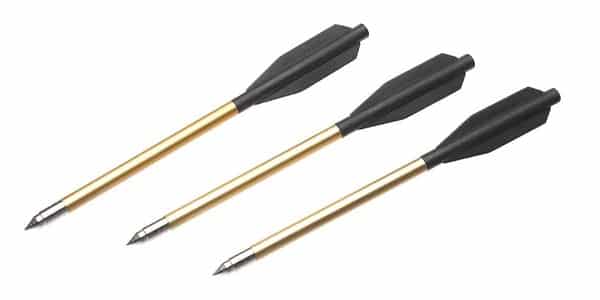
Due to the wings, it rotates along its own axis and provides the hunters fully reliable shots towards the target. They are available in the market within multiple shapes and sizes.
25. HEAD
There are two different sorts of heads in the crossbow accessories, known as field points and broadheads. Field points are commonly used by beginners for their shooting practices.
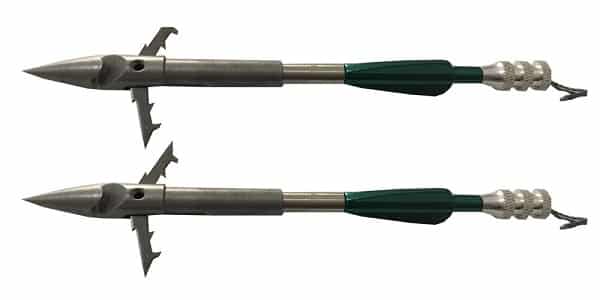
While broadhead used by the professional hunters during the hunting fields.
The reason is that broadheads are much more expensive, they are hard to tune, have to be sharpened, and also not easy to screw but they penetrate very well in the target, as compared to field points.
Moreover, both are categorized in different portions such as weight, shape, and size.
Field points are weighed from the 125 to 150 grains.
Summary
Finally, we have created a much helpful and comprehensive guide successfully, on each part of the crossbow that will make you the perfect hunter in the right sense!



